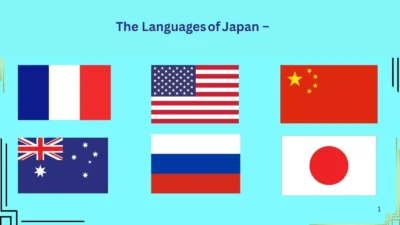what readers really want
If you just Googled “twelve in different languages in Japan” you’re probably:
- trying to count beyond ichi‑ni‑san for a trip to Tokyo or Okinawa,
- polishing a multilingual script, or
- just curious how far Japan’s linguistic diversity really reaches.
Whatever the motive, the problem is the same: one reliable page that shows how “twelve” is said, written and actually used in every major language you’ll meet inside Japan’s borders.
This guide solves that in one scroll—no linguistics doctorate required.
Why the number twelve matters
12 isn’t just the step between eleven and thirteen. In Japanese culture it means one revolution of the zodiac, a dozen in trade, and the age of leaving elementary school. Globally it sits at the heart of calendars, clocks and cuisine (think “a dozen gyoza”). Knowing how to say it correctly lets you talk ages, dates, prices and even railway platforms with confidence.
Quick reference – “twelve” in 12 languages spoken in Japan
| Language (community) | Script / Spelling | Romanisation / IPA | Notes |
| Japanese (Standard) | 十二 | jūni | Sino‑Japanese counting system (omniglot.com) |
| Ainu (Hokkaidō) | トゥ イカシマ ワン | tu ikasima wan | literally “two after ten” (omniglot.com) |
| Okinawan (Uchinaaguchi) | じゅーに | jūni | 11–99 now match Standard Japanese (okinawanonline.tumblr.com) |
| Miyakoan (Miyako Isles) | とぅーふたーつ | tū‑futātsu | native Ryukyuan form (omniglot.com) |
| Amami (Northern Amami‑Ōshima) | dʑuːɲi | /d͡ʑuːɲi/ | adapted from Japanese (lingweb.eva.mpg.de) |
| Yonaguni (Yaeyama chain) | トゥー + Japanese 十ニ | tu + jūni | counts above 10 use Japanese roots (omniglot.com) |
| Korean (Zainichi/Kankoku‑go) | 열둘 / 십이 | yeoldul (native), sibi (Sino‑Korean) (omniglot.com) | |
| Mandarin Chinese (Chinese diaspora) | 十二 | shí’èr (omniglot.com) | |
| Cantonese (Hong Kong Cantonese) | 十二 | sap⁶ ji⁶ | tone 6‑6 |
| Portuguese (Brazilian‑Japanese) | doze | /ˈdo.zi/ (omniglot.com) | |
| Tagalog (Filipino community) | labingdalawa / dose | native & Spanish‑derived forms (omniglot.com) | |
| English | twelve | /twɛlv/ | common second language nationwide |
(Dialects and minority tongues number far more than twelve, but these are the ones you’re most likely to hear in modern Japan.)
How to use each form in real sentences
1. Japanese
「ケーキを十二個ください。」
“Please give me twelve pieces of cake.”
Counter 個 (ko) is the universal “general item” counter.
2. Ainu
“Tu ikasima wan orowa an.” – “There are twelve over there.”
Notice the verb an (“exist”) follows the numeral phrase.
3. Okinawan
「ジューニ にん、めんそーれー。」
“Welcome, twelve people.” (Used in tourist restaurants on Kokusai‑dōri.)
4. Miyakoan
「マイヌ とぅーふたーつ あーしが?」
“Do you have twelve mangos?” (fruit‑counter omitted as in everyday speech.)
5. Amami
“dʑuːɲi n hica.” – “Twelve sunfish.” (hica = sunfish)
6. Yonaguni
Locals simply say jūni when the count exceeds ten, e.g.
「ジューニ 台のバイク」 – “12 motorbikes.”
7. Korean
“올해 열둘(12) 살이에요.”
“He/She is twelve years old.”
8. Mandarin
“我们有十二个座位。” – “We have twelve seats.”
9. Cantonese
「我哋十二點食晏。」
“We’re having lunch at twelve o’clock.”
10. Portuguese
“Chegam doze convidados amanhã.”
“Twelve guests arrive tomorrow.”
11. Tagalog
“May labindalawa kaming estudyante.”
“We have twelve students.”
12. English
“Platform twelve departs in five minutes.”
Pro‑tips for sounding natural
- Pick the right counting word (counter) in Japanese & Ryukyuan.
Goods = 個 ko, long objects = 本 hon, people = 人 nin. - Mind native vs. Sino systems.
Korean and Tagalog both switch between two number sets depending on the noun. - Borrowings are normal.
Above ten, many Ryukyuan and Amami speakers default to the Japanese jūni. Don’t be surprised if you hear mixed sentences. - Check tone and stress.
Chinese and Cantonese tones change meaning; mis‑toning “shí’èr” can summon giggles. - Cultural cues.
In Japan, ages are often said as “12‑sai” (十二歳). Orders for sushi sets might be “1じゅう2貫” (twelve pieces) rather than a straight 十二.
Conclusion – one number, many voices
The simple act of saying twelve opens a window onto Japan’s mosaic of tongues— from Ainu elders in Hokkaidō to Brazilian factory workers in Aichi. Master these forms and you’ll count with confidence, impress new friends, and glimpse the living diversity often hidden behind the label “Japanese.” Keep exploring—every number has a story.



